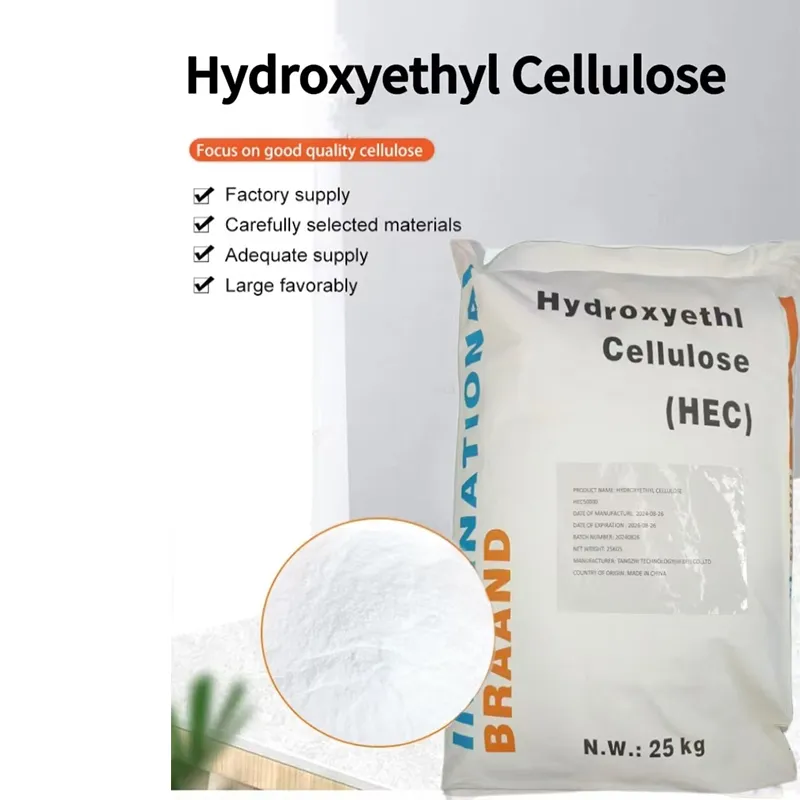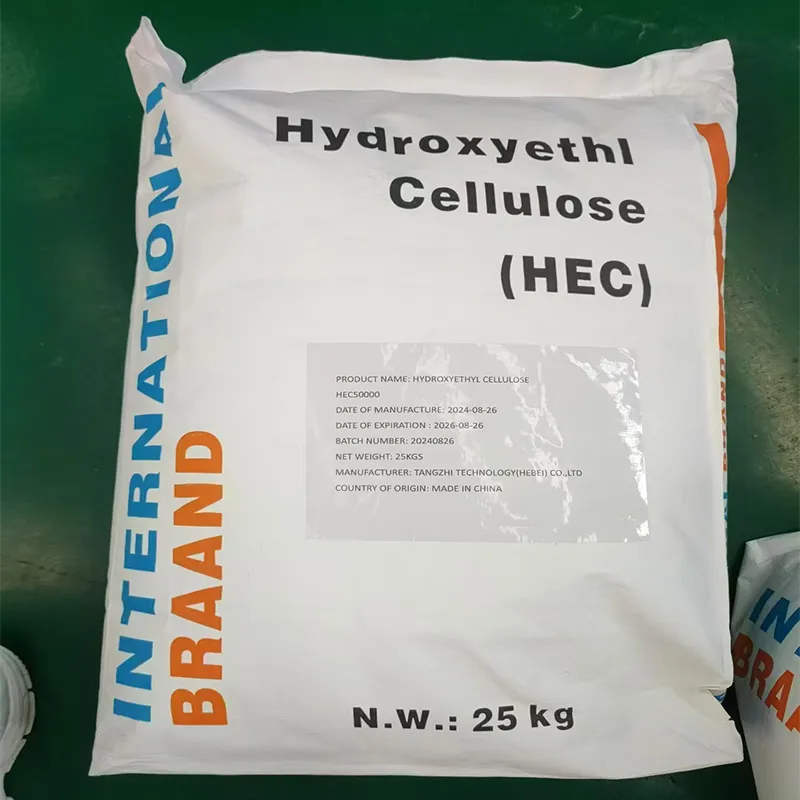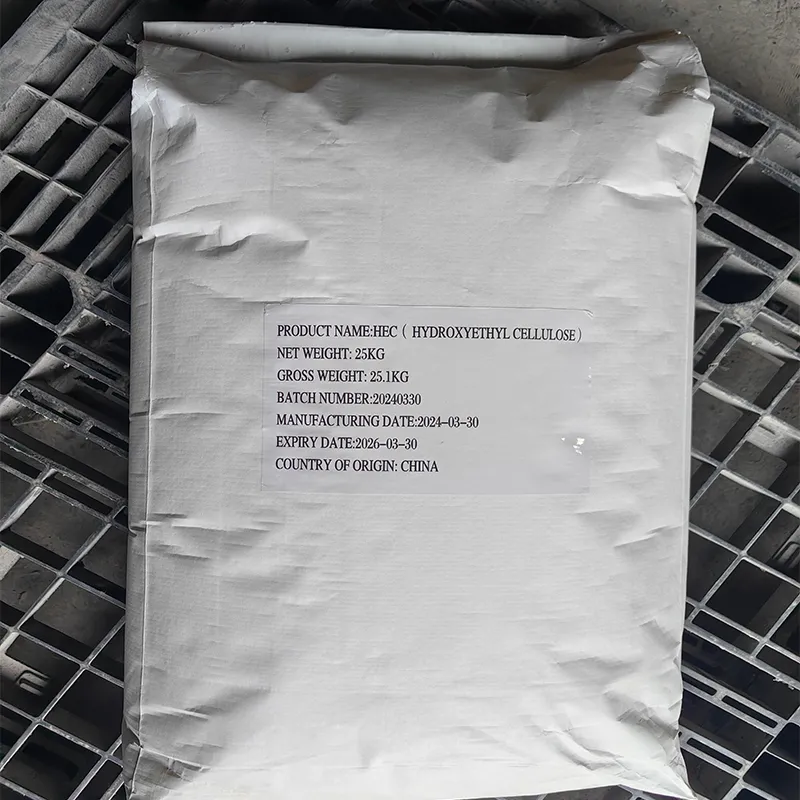
Hydroxyethyl Cellulose for Paint - Premium Thickening Solution
Manufacturer Profile
HEBEI TANGZHI TECHNOLOGY CO., LTD. specializes in manufacturing premium-grade cellulose ethers, serving clients worldwide from our facility in Shijiazhuang, China. With advanced production capabilities and strict quality control, we deliver consistent performance in specialty chemical applications.
Premium Performance in Paint Applications
The paint industry constantly seeks additives that enhance performance while maintaining environmental compliance. Hydroxyethyl cellulose for paint formulations represents one of the most significant technical breakthroughs in coating technology. This non-ionic water-soluble polymer (CAS NO.: 9004-62-0) revolutionized water-based formulations by providing unparalleled thickening, rheological control, and stabilization properties.

Why Choose Our HEC for Paint?
Hebei Tangzhi Technology produces hydroxyethyl cellulose specifically engineered for coating applications. Our products provide:
- Superior viscosity consistency across different temperatures
- Enhanced brushability and spatter resistance
- Improved pigment suspension and color stability
- Water retention properties that prevent premature drying
- Compatibility with diverse paint formulations
For formulators seeking reliable hydroxyethyl cellulose for paint applications, our products deliver technical advantages that translate to real-world performance benefits.
Technical Specifications for Paint-Grade HEC
Understanding technical parameters is crucial when selecting hydroxyethyl cellulose for paint formulations. Below are key performance specifications across different viscosity grades:
| Parameter | Low Viscosity Grade | Medium Viscosity Grade | High Viscosity Grade | Testing Standard |
|---|---|---|---|---|
| Viscosity (2% solution) | 300-600 mPa·s | 4,000-6,000 mPa·s | 20,000-25,000 mPa·s | Brookfield LVF |
| Moisture Content (%) | ≤5.0 | ≤5.0 | ≤5.0 | GB/T 2914 |
| Ash Content (%) | ≤5.0 | ≤5.0 | ≤5.0 | GB/T 9285 |
| pH (1% solution) | 6.0-8.5 | 6.0-8.5 | 6.0-8.5 | GB/T 6368 |
| Transmittance (%) | ≥90 | ≥90 | ≥90 | GB/T 1717 |
| Mesh Size (100 mesh passing rate) | ≥99% | ≥99% | ≥99% | GB/T 1713 |
Viscosity-Temperature Performance Relationship
The effectiveness of hydroxyethyl cellulose for paint applications critically depends on its viscosity-temperature relationship. Tangzhi Technology's specialized HEC products demonstrate exceptional temperature stability, maintaining consistent viscosity from 5°C to 50°C – an essential characteristic for paints applied in variable weather conditions.
Our hydroxyethyl cellulose based additives provide shear-thinning rheology that ensures proper flow during application while preventing sagging on vertical surfaces. This balance of properties makes our products ideal for architectural paints where application characteristics directly impact finish quality.

Performance Analysis: Comparative Study

Market Growth and Industry Trends
Demand for hydroxyethyl cellulose for paint continues to grow annually at approximately 6.2% CAGR, driven primarily by environmental regulations favoring water-based systems. As formulators transition from solvent-based to water-based paints, hydroxyethylcellulose based additives become increasingly essential. Tangzhi Technology maintains an R&D focus on:
- Surface-treated HEC for instant dissolution without lumping
- Biostable grades for extended shelf life
- Low VOC formulations meeting global regulatory requirements
- Enhanced compatibility with acrylic, vinyl, and styrene-butadiene systems
For manufacturers seeking to buy hydroxyethyl cellulose with these advanced properties, our technical team provides comprehensive formulation support.
Application Engineering Solutions
Tangzhi Technology's hydroxyethyl cellulose for paint delivers targeted performance across coating applications:
Architectural Paints
Provides excellent brush drag and roller application properties while eliminating misting and spattering. Our HEC ensures uniform film formation even at high spread rates.
Primers & Sealers
Enhances sealing effectiveness through controlled penetration while maintaining uniform film thickness over porous surfaces.
Textured Finishes
Delivers consistent structural viscosity for pattern control and texture retention in heavy-bodied finishes.
Industrial Maintenance Coatings
Improves film build, sag resistance, and surface leveling in high-performance protective coating systems.
Technical FAQ: Hydroxyethyl Cellulose for Paint
A: Conversion requires careful formulation adjustment due to non-linear viscosity relationships. Typically:
- Low → Medium: Reduce usage by ~25-30%
- Medium → High: Reduce usage by ~35-40%
- Include controlled neutralization during dissolution phase
A: MS determines critical properties:
- MS 1.8-2.0: Excellent water retention but moderate salt tolerance
- MS 2.1-2.5: Improved solubility in electrolyte solutions
- MS 2.6+: Superior enzymatic resistance but lower thickening efficiency
A: For common formulations:
- Medium-viscosity: 0.3-0.5% achieves 90-100 KU
- High-viscosity: 0.15-0.25% achieves comparable viscosity
- Surface treated grades require 10-15% lower concentrations
A: Critical performance factors include:
- Optimal hydration: pH 7-9
- Below pH 5: Reduced water solubility
- Above pH 10: Possible alkaline hydrolysis
- Surface treated grades hydrate effectively at pH 3-11
A: Significant considerations:
- Calcium carbonate: Creates flocculation at pH
- Zinc oxide: Causes gelation above 55°C
- Organic pigments: Increased viscosity demand
- Solution: Use modified HEC with phosphate groups
A: Complementary performance benefits:
- HEC: Controls water phase viscosity
- ASE/HASE: Enhances flow/leveling
- Recommended ratio: 60-70% HEC with 30-40% associative thickener
A: Industry-standard evaluations:
- Accelerated aging: 45°C for 4 weeks ≈ 1 year stability
- Freeze-thaw cycling: -10°C to 40°C for 5 cycles
- Biodegradation: ASTM D2574 microbial resistance testing
- Viscosity stability:
Global Distribution Network
Tangzhi Technology ensures worldwide access to premium hydroxyethyl cellulose for sale through strategic distribution partnerships. Our logistics infrastructure guarantees:
- Temperature-controlled transportation
- Multi-location stock availability
- Custom packaging options (25kg bags to 1000kg supersacks)
- Just-in-time delivery capabilities
- Flexible quantity requirements
For organizations needing hydroxyethyl cellulose CAS number 9004-62-0 materials with certified documentation, our technical team provides full compliance packages meeting REACH, TSCA, and international regulatory requirements.

Industry Recognition & References
"Hydroxyethyl cellulose remains the most cost-effective rheology modifier for water-borne architectural paints. Its shear-thinning behavior provides the ideal balance between storage viscosity, application properties, and film formation."
"Recent advances in cellulose ether technology have produced surface-treated HEC varieties that dissolve rapidly without forming fish-eyes or gel particles - solving one of the primary processing challenges in paint manufacturing."
"Modified hydroxyethyl cellulose with biostability features demonstrates less than 3% viscosity loss over 6 months in water-based coatings - a significant improvement over conventional cellulose ethers."
American Coatings Association Technical Symposium Proceedings
-
Reliable Powdered Cellulose Supplier: Quality, Sustainability & InnovationNewsNov.24,2025
-
Find Trusted Microfibrillated Cellulose Suppliers for Sustainable Industrial SolutionsNewsNov.24,2025
-
Leading Methocel Suppliers: Quality, Innovation & Sustainability in Methylcellulose SupplyNewsNov.23,2025
-
Reliable Hydroxyethylcellulose Suppliers for Industry & Sustainability | Tangzhi HPMCNewsNov.23,2025
-
Top Ethyl Cellulose Supplier – Quality, Sustainability, and Industrial SupportNewsNov.23,2025
-
Trusted CMC Powder Suppliers for Food, Pharma & Industrial Use | Tangzhi HPMCNewsNov.22,2025





















